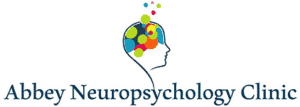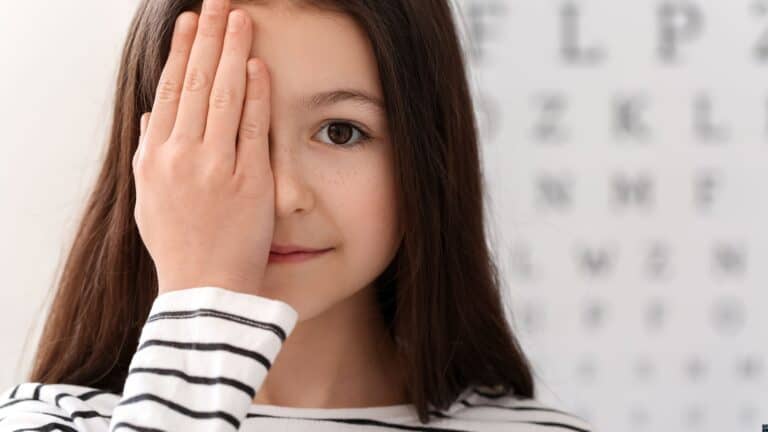Experience a transformative shift in eye health with innovative techniques designed to enhance vision naturally. Discover personalized approaches that integrate exercises and habits to support optimal visual acuity. Embrace a holistic journey that emphasizes relaxation, focusing, and peripheral awareness techniques to rejuvenate your eyes. Learn from experts in vision improvement and unlock the potential for clearer, sharper vision. Join the movement towards better eye health today and embark on a path to revitalized eyesight through effective, non-invasive methods.
Understanding Digital Eye Strain
In today’s digital age, prolonged screen use is ubiquitous, contributing to widespread digital eye strain among users. Symptoms such as dry eyes, headaches, and blurred vision are common manifestations of this condition. Understanding its causes, including prolonged exposure to screens emitting blue light, inadequate lighting conditions, and poor ergonomic setups, is essential for mitigating its effects.
Simple adjustments like taking frequent breaks to rest the eyes, employing blue light filters on devices, or adjusting screen brightness to match ambient lighting can alleviate strain significantly. Increasing awareness about these issues and adopting proactive measures are imperative for safeguarding long-term eye health in the era dominated by digital devices and screens.
The Role of Nutrition in Eye Health
Nutrition is crucial for preserving optimal eye health through its impact on various aspects of vision. Vitamins A, C, and E, along with antioxidants such as lutein and zeaxanthin, play vital roles in supporting eye function and protecting against conditions like age-related macular degeneration (AMD) and cataracts.
These nutrients are abundant in foods like leafy greens such as spinach and kale, colorful fruits like berries and oranges, fish rich in omega-3 fatty acids such as salmon and trout, and nuts like almonds and walnuts. Incorporating these nutrient-rich foods into your daily diet not only promotes overall health but also contributes to sharper vision and reduces the likelihood of developing debilitating eye diseases. A balanced diet ensures that your eyes receive the essential nutrients they need to maintain clarity and health throughout life.
Innovative Technologies for Vision Improvement
Advances in technology have revolutionized vision improvement methods. From customized laser eye surgeries to advanced contact lens designs and digital vision therapy tools, these innovations offer tailored solutions for various vision issues. Virtual reality (VR) and augmented reality (AR) are also being explored for vision training and rehabilitation purposes. These technologies not only enhance visual acuity but also contribute to the overall effectiveness and precision of eye care treatments.
Customized Laser Eye Surgeries
These procedures utilize advanced technologies to precisely reshape the cornea, correcting refractive errors such as myopia, hyperopia, and astigmatism. By tailoring treatment to individual eye characteristics, patients experience improved visual acuity and reduced dependency on corrective lenses.
Advanced Contact Lens Designs
Modern lenses include multifocal and toric options that address complex vision issues. They enhance visual clarity and comfort by correcting presbyopia, astigmatism, and other conditions with innovative materials and designs tailored to individual eye shapes and needs.
Digital Vision Therapy Tools
These tools leverage interactive software and apps to improve eye coordination, focus, and visual processing abilities through targeted exercises. They are designed to address specific vision deficiencies and enhance overall visual performance through engaging and effective rehabilitation techniques.
Virtual Reality (VR) for Vision Training
VR environments simulate real-world scenarios to aid in vision rehabilitation and enhancement. By immersing users in interactive experiences, VR helps improve depth perception, spatial awareness, and visual field expansion, making it a promising tool in vision care and therapy.
Augmented Reality (AR) Applications
AR overlays digital information onto the physical environment, assisting with tasks like reading or navigation. This technology enhances visual tasks for individuals with impaired vision by providing real-time feedback and support, integrating seamlessly into daily activities for improved functionality and independence.
Daily Habits for Optimal Eye Care
Developing and maintaining healthy daily habits is fundamental to ensuring optimal eye care and long-term vision health. Regular eye exams are critical for detecting early signs of eye conditions or diseases that could impact vision. Practicing good hygiene, such as washing hands before touching eyes or handling contact lenses, helps prevent infections that could harm eye health.
Wearing UV-protective sunglasses outdoors shields eyes from harmful ultraviolet rays, reducing the risk of cataracts and macular degeneration. Staying adequately hydrated supports overall eye function and lubrication, minimizing dryness and discomfort. Avoiding smoking is crucial as it increases the risk of developing cataracts, optic nerve damage, and macular degeneration.
Holistic Approaches to Vision Training
Holistic approaches to vision training encompass a comprehensive range of practices that integrate physical exercises, relaxation techniques, and specialized eye exercises aimed at enhancing vision naturally. Techniques such as palming, where the palms cover closed eyes to induce relaxation and reduce strain, are commonly used. Eye yoga exercises, involving movements that stretch and strengthen eye muscles, promote better coordination and improved focus.
Focusing exercises, which involve alternating focus between near and distant objects, help maintain flexibility and clarity of vision. These holistic methods not only alleviate eye strain and fatigue but also enhance blood circulation around the eyes, nourishing tissues and supporting overall eye health. By emphasizing the interconnectedness of the mind and body, holistic vision training encourages a balanced approach to maintaining and improving visual acuity, fostering long-term eye wellness and clarity.
Age-Related Vision Challenges
Aging brings about changes in vision, including presbyopia, cataracts, and age-related macular degeneration (AMD). Presbyopia affects near vision as the eye’s lens loses flexibility, requiring reading glasses or corrective lenses. Cataracts cause cloudy vision due to protein buildup in the eye’s lens, while AMD affects central vision. Regular eye exams help detect these conditions early, allowing for timely intervention and management strategies to preserve vision and quality of life.
- Presbyopia: Occurs due to the loss of flexibility in the eye’s lens, impacting near vision and often necessitating the use of reading glasses or corrective lenses.
- Cataracts: Result from protein buildup in the eye’s lens, leading to cloudy or blurred vision over time, which can impair daily activities and require surgical intervention.
- Age-related Macular Degeneration (AMD): Affects central vision by damaging the macula, leading to blurriness or blind spots that can significantly impact visual acuity.
- Regular Eye Exams: Crucial for early detection of presbyopia, cataracts, and AMD, enabling prompt intervention to slow progression and preserve vision.
- Timely Intervention and Management: Early detection through regular exams allows for timely implementation of treatment strategies such as corrective lenses, surgery for cataracts, or therapies to manage AMD, preserving quality of life and maintaining visual health.
Environmental Factors and Eye Health
Environmental factors play a crucial role in influencing eye health and susceptibility to various conditions. Exposure to ultraviolet (UV) radiation from sunlight is a significant risk factor for developing cataracts and age-related macular degeneration (AMD), as UV rays can accelerate oxidative stress and damage to the eye’s tissues over time. Air pollution, including particulate matter and allergens, can lead to dry eyes and irritation, exacerbating symptoms for those already prone to these conditions.
In workplaces, prolonged screen use and exposure to hazardous materials pose risks such as digital eye strain, characterized by symptoms like eye fatigue and discomfort, and potential eye injuries. Awareness of these environmental influences is essential for adopting preventive measures like wearing UV-protective sunglasses outdoors, using lubricating eye drops to maintain moisture, and wearing appropriate protective eyewear in occupational settings.
The Future of Eye Care: Trends and Innovations
The future of eye care is poised for significant advancements driven by cutting-edge treatments and technologies. Gene therapy holds promise for treating inherited eye diseases by targeting specific genetic mutations that cause conditions like retinitis pigmentosa and Leber congenital amaurosis.
Artificial intelligence (AI) is revolutionizing early disease detection through advanced algorithms that analyze medical images and patient data, identifying subtle changes indicative of eye diseases such as glaucoma or diabetic retinopathy. Nanotechnology is enhancing drug delivery systems by enabling targeted administration of medications to precise locations within the eye, optimizing treatment efficacy and minimizing side effects.
Conclusion
The future of eye care shines brightly with transformative advancements in treatments and technologies. From pioneering gene therapies targeting inherited eye diseases to the revolutionary potential of artificial intelligence for early detection, and nanotechnology’s precision in drug delivery, the landscape is evolving rapidly. Innovations like wearable health monitors and personalized treatments tailored to genetic profiles promise to redefine how to approach eye health. At Abbey Neuro Psychology Clinic in 366 S. California Avenue, Suite 14 Palo Alto, CA 94306, embraces these cutting-edge developments to ensure patients receive the most advanced and personalized care. Contact 650-590-5743 to learn more about commitment to visionary health.






